Focke-Wulf Fw 190 D-9
Super 44 Edition
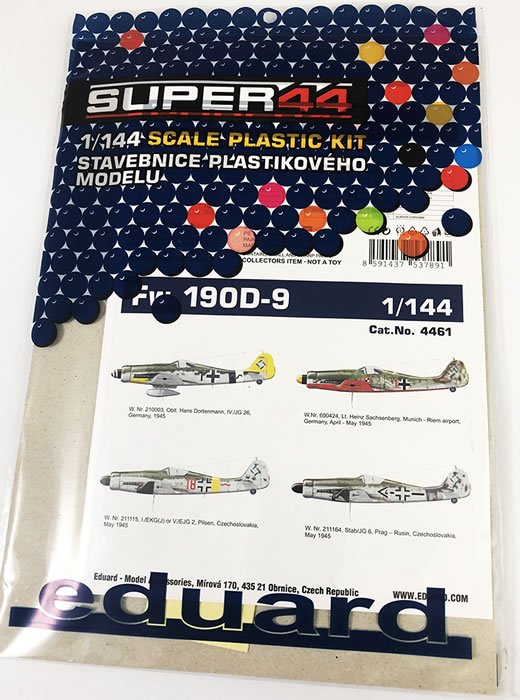
Eduard, 1/144 scale
S
u m m a r y |
| Catalogue Number and Price: |
Eduard Kit No. EDK4461 - Douglas A-4F Skyhawk Super 44 Edition
USD$12.95 plus shipping available online from Eduard
GBP£7.99 EU Price (GBP£6.66 Export Price) plus shipping available online from Hannants
and hobby retailers worldwide
|
| Scale: |
1/144 |
| Contents and Media: |
One grey injection moulded sprue containing 29 parts, a clear sprue with 2 parts, 1 sheet of decals, masks and an eight page instruction booklet |
| Review Type: |
First Look at Eduard rebox. |
| Advantages: |
A kit with crisp yet subtle moulding with good level of detail, Eduard’s usual high quality instructions. It has four colourful schemes offered. |
| Disadvantages: |
|
| Conclusion: |
A chance to add a well detailed, yet fairly simple construction kit with a good range of late Luftwaffe schemes. A nice kit! |
Reviewed by David Couche

The Focke-Wulf Fw 190 Würger (English: Shrike) was a German single-seat, single-engine fighter aircraft designed by Kurt Tank in the late 1930s and widely used during World War II. Along with its well-known counterpart, the Messerschmitt Bf 109, the Fw 190 became the backbone of the Luftwaffe's Jagdwaffe (Fighter Force). The twin-row BMW 801 radial engine that powered most operational versions enabled the Fw 190 to lift larger loads than the Bf 109, allowing its use as a day fighter, fighter-bomber, ground-attack aircraft and, to a lesser degree, night fighter.
The Fw 190A started flying operationally over France in August 1941, and quickly proved superior in all but turn radius to the Royal Air Force's main front-line fighter, the Spitfire Mk. V, particularly at low and medium altitudes. The 190 maintained superiority over Allied fighters until the introduction of the improved Spitfire Mk. IX. In November/December 1942, the Fw 190 made its air combat debut on the Eastern Front, finding much success in fighter wings and specialised ground attack units called Schlachtgeschwader (Battle Wings or Strike Wings) from October 1943 onwards.
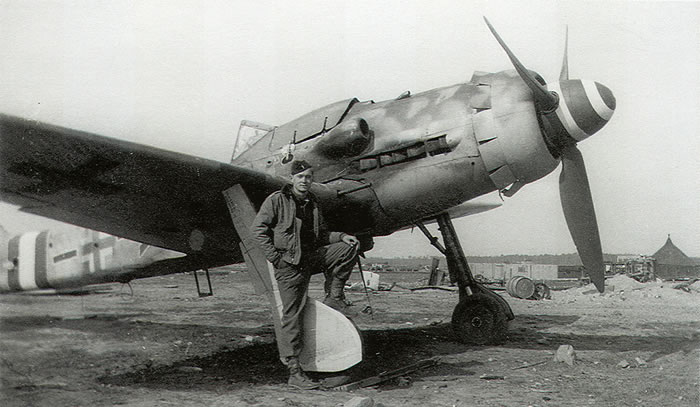
The Fw 190A series' performance decreased at high altitudes (usually 6,000 m (20,000 ft) and above), which reduced its effectiveness as a high-altitude interceptor. From the Fw 190's inception, there had been ongoing efforts to address this with a turbosupercharged BMW 801 in the B model, the much longer-nosed C model with efforts to also turbocharge its chosen Daimler-Benz DB 603 inverted V12 powerplant, and the similarly long-nosed D model with the Junkers Jumo 213. Problems with the turbocharger installations on the -B and -C subtypes meant only the D model entered service in September 1944. These high-altitude developments eventually led to the Focke-Wulf Ta 152, which was capable of extreme speeds at medium to high altitudes ( 755 km/h (408 kn; 469 mph) at 13,500 m (44,300 ft)). While these "long nose" 190 variants and the Ta 152 derivative especially gave the Germans parity with Allied opponents, they arrived too late to affect the outcome of the war.
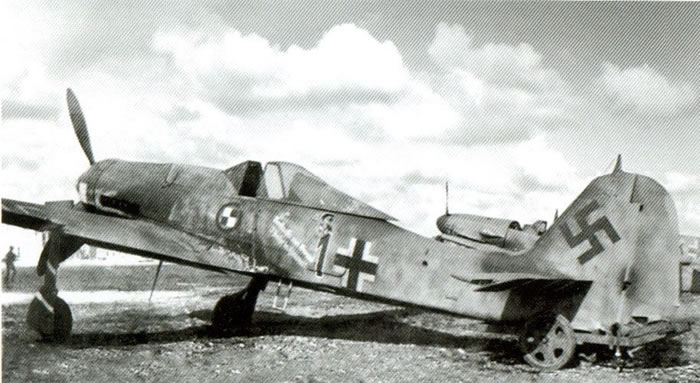
The Fw 190 was well-liked by its pilots. Some of the Luftwaffe's most successful fighter aces claimed many of their kills while flying it, including Otto Kittel, Walter Nowotny and Erich Rudorffer. The Fw 190 provided greater firepower than the Bf 109 and, at low to medium altitude, superior manoeuvrability, in the opinion of German pilots who flew both fighters. It was regarded as one of the best fighter planes of World War II.
The D-9 series was rarely used against heavy-bomber raids, as the circumstances of the war in late 1944 meant that fighter-versus-fighter combat and ground attack missions took priority. There were between 650 and 700 D versions built before the war ended.
- Text mostly from Wikipedia
The Eduard kit comes in a large plastic bag (close to A4 size) with a cardboard centre to it, so it is relatively sturdy. This kit was originally the Platz released kit from 2005, which was one of the best 1/144 kits released for a long while. Inside the large contains a sprue tree in a separate plastic bag for safe transport. This contains a single sprue of grey injected moulded, nicely detailed parts with 29 parts on them which enables you build a very nicely detailed model, but small model, quite simply. The clear sprue comes with options of both a blown and straight canopies. There are 4 schemes with 2 each of type covered in the schemes. There is a smallish sheet of decals and the usual comprehensive instruction booklet, about A5 size of 8 pages. Eduard supplies a mask set as well with this little kit.
All sprues are fairly cleanly moulded with a little flash evident, and have a mix of raised and recessed detail as is required. The recessed detail is quite appropriate for the scale of the kit. The cockpit detail is very basic with only an ejection sheet in it, as are the wheel wells. Eduard do make an etch set for this kit but that would need to be purchased as an extra.
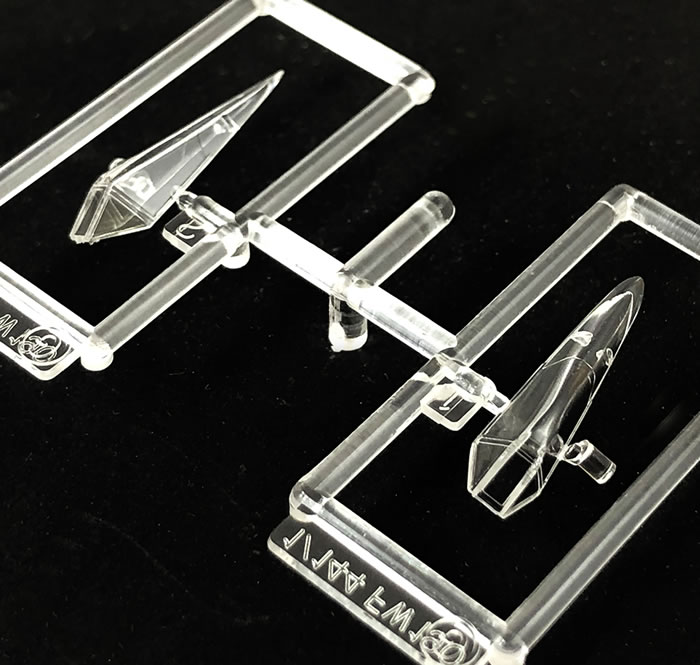
The single sprue has all parts required to construct the aircraft. Found here are the nicely detailed fuselages, with tails on both halves and the rudder on one to help with part alignment when assembling. The kit also supplies a one piece lower wing with the ailerons moulded complete in it to again help in aligning the wing sections at assembly time. You will need to clean some of the parts as there is some minor flash but not really a problem.
The clear parts are quite clear and crisply moulded.
Instructions and Decals
The instructions for the kit are the usual Eduard, with a glossy booklet of 8 A5 pages of high quality detailed instructions, with copious colour call outs throughout, using the Gunze Aqueous, Mr Color as well as the Mission Models range. The decals are printed by Eduard and appear to be in perfect register giving the options for 4 different aircraft. A masking set gives you masks for the wheels and the canopy, which is certainly a big help.
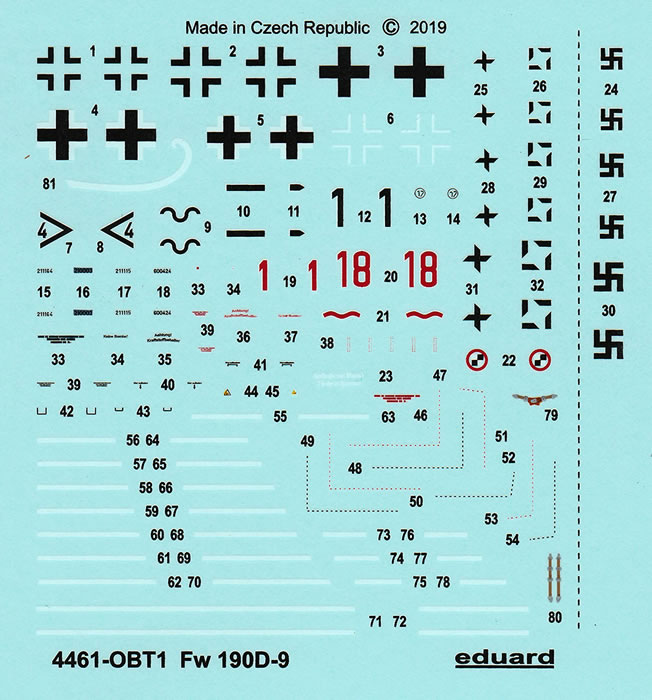
The four options are:
-
W Nr. 210003, flown by Oblt. Hans Dortenmann, IV./JG 26, Germany, 1945
-
W Nr. 600424, flown by Lt. Heinz Sachsenberg, Munich-Reim airport, April-May 1945
-
W.Nr. 211115, I./EKG(J) or V./EJG 2, Pilsen, Czechoslovakia, May 1945
-
W Nr. 211164, Stab/JG 6, Prag-Rusin, Czechoslovakia, May 1945
Eduard has again released the previously boxed Platz kit with a set of new decals and masks. This kit will build into a lovely very small scale quality model and certainly will bring some brightness to your model cabinet with the great colourful schemes. A highly recommended kit for the ‘micro’ scale Luftwaffe modeller.
Thanks to Eduard for the sample
Review Text Copyright © 2020 by David Couche
Page Created 6 August, 2020
Last updated
6 August, 2020
Back to HyperScale Main Page
Back to Reviews Page |
